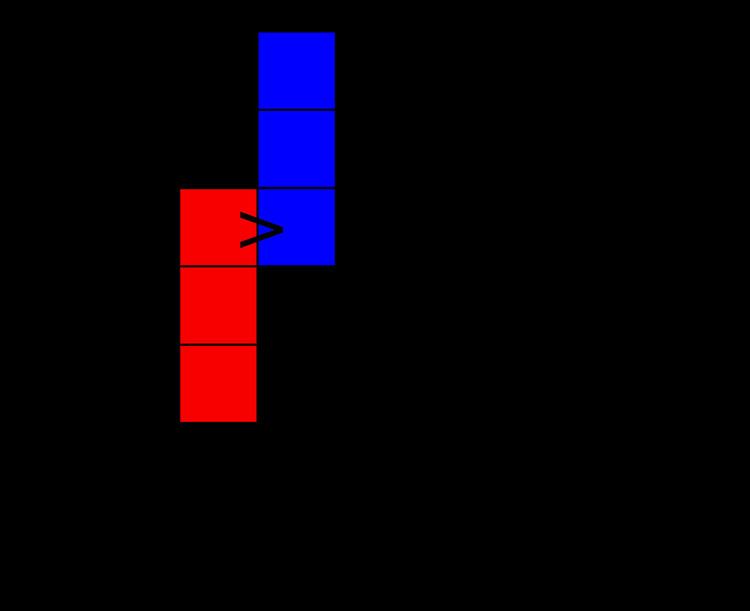 | ||
In mathematics, the Garnir relations give a way of expressing a basis of the Specht modules Vλ in terms of standard polytabloids.
Contents
Specht modules in terms of polytabloids
Given a partition λ of n, one has the Specht module Vλ. In characteristic 0, this is an irreducible representation of the symmetric group Sn. One can construct Vλ explicitly in terms of polytabloids as follows:
Straightening polytabloids and the Garnir elements
The above construction gives an explicit description of the Specht module Vλ. However, the polytabloids associated to different Young tableaux are not necessarily linearly independent, indeed one expects the dimension of Vλ to be exactly the number of standard Young tableaux of shape λ. In fact, the polytabloids associated to standard Young tableaux span Vλ; to express other polytabloids in terms of them, one uses a straightening algorithm.
Given a Young tableau S, we construct the polytabloid eS as above. Without loss of generality, all columns of S are increasing, otherwise we could instead start with the modified Young tableau with increasing columns, whose polytabloid will differ at most by a sign. S is then said to not have any column descents. We want to express eS as a linear combination of standard polytabloids, i.e. polytabloids associated to standard Young tableaux. To do this, we would like permutations πi such that in all tableaux Sπi, a row descent has been eliminated, with
Suppose we want to eliminate a row descent in the Young tableau T. We pick two subsets A and B of the boxes of T as in the following diagram:
Then the Garnir element
Example
Consider the following Young tableau:
There is a row descent in the second row, so we choose the subsets A and B as indicated, which gives us the following:
This gives us the Garnir element
Other interpretations
There is a similar description for the irreducible representations of GLn. In that case, one can consider the Weyl modules associated to a partition λ, which can be described in terms of bideterminants. One has a similar straightening algorithm, but this time in terms of semistandard Young tableaux.
